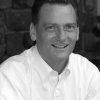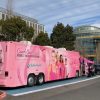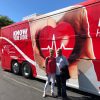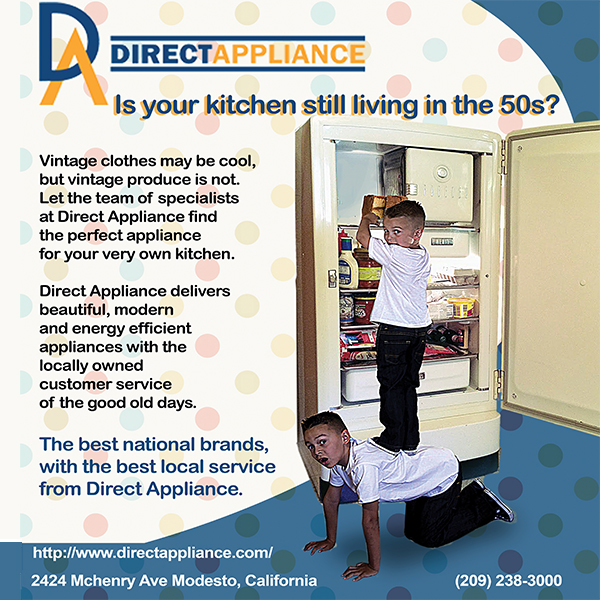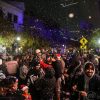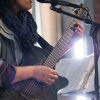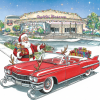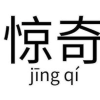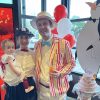InterView
By Chris Murphy
This month, there are a couple of really important walks, fundraisers and other benefit events for health. Besides the Walk for Alzheimer’s, Breast Cancer Walk, the Rotary Senior Stride and there is the Walk for Heart. Heart health has been something I have been focused on since my atrial flutter experience two years ago and it is something that I watch closely. The ModestoView /Sierra Pacific have a walk team this year and we are seeking donations. In addition to this, there is real new innovation here in Modesto, something new that is of national significance. For so many, getting tested for mammograms, or heart disease has been something that takes months to get an exam, lots of doctor red tape and in many cases, is too inconvenient for many. Jim Drury of Modesto has invented a revolutionary way to bring testing to the masses and take it out of the hospital and bring it to public events and even the workplace. His own struggle with heart disease in his family lead Jim to develop an amazing software and deploy it in a mobile clinic. We normally don’t focus on some of these business activities, but this is truly innovative and is being created here in our area and potentially a health care game changer. With manufacturing in Ceres and Patterson, an expert team of developers and medical experts, these mobile clinics are rolling out across the USA. Let’s meet Jim Drury, of Life Saving Images.
ModestoView: How did you develop the passion for this?
Jim Drury: First hand painful experiences, how health issues can hurt families. That has given me a passion to fight back. My dad died of a heart attack, with no symptoms, when I was 9 years old. I went to school one day, came back and he was dead. I didn’t have a chance to have a beer with my dad, or play golf, or share growing up with him. Three of my family members have breast cancer, discovered in a 3 year time period, 2 of the 3 were late stage. That was the last straw for me. I was angry and still am, that cancer and heart disease hurt so many people, including kids of parents who die. I told my wife, I need to start a company to increase screening, and make it easier to fight back. What good is advanced screening technology when screening rates are declining – why? With what we know now, and the advanced screening technology we have, if my dad was alive today we would have found his silent heart issue before it killed him and we would have fixed it. The same with cancer, which grows steadily and can be found early. I am fighting back for others to provide education and access to more convenient screening, and to include everyone, not just people in certain areas, or with certain insurance, etc. Cancer and heart disease do not discriminate and we cannot either. Those are the issues that motivate me every day.
MV: Why do you think that it is so hard to get the screening and tests that people literally need to survive?
JD: Studies show the biggest issue is time, as some screenings at a fixed location can take 2 hours or more and require more time to schedule and take off work. Everyone is busy, and screening is often neglected for years. But with LSI, it takes 10 minutes or less because we eliminate the driving and outdated ways to schedule a screening. When it’s that convenient and fast, almost everyone wants to get screened. Once you have been completely screened for the 6 major cancer risks, diabetes and heart disease, and know your baseline, then its empowering to have the upper hand, and you can enjoy life more fully. With LSI, you can manage screening for all major risks for you and your family on your smart phone, coordinated with your physician.
MV: How are these mobile clinics such a game changer?
JD: The mobile clinics and our software eliminate all the objections to screening. Let’s look at just one type of the 8 screenings we provide – the heart MIC (Mobile Imaging Clinic). Heart disease is the #1 killer and a threat to all men and women. Our offering started after multiple employees of some very famous Silicon Valley companies died of a heart attack with normal blood pressure and normal cholesterol. They had no symptoms – just like my dad, there was no warning. Their family members found a test developed at UCSF that could have saved these lives. But the test was not used in their case because it was expensive, not covered by insurance, and few centers were equipped to offer it. Mammograms were not covered by insurance for 20 years either. They contacted us, and asked if we could build a mobile imaging clinic, reduce the cost to a price of $150, rather than $1,000 at some providers, and screen in 10 minutes for use at employers and other locations. We agreed to try, and after 2 years of very difficult R&D, we built the world’s first truly mobile 10-minute heart exam, essentially “a mammogram of the heart” for men and women at employers, physician offices, and cities. I can tell you this is a major breakthrough. This test is extremely effective and we are the only provider that can move daily and go to restricted areas like physicians offices. Our timing is perfect, as the American Heart Association recently published new guidelines recommending this test as applicable for intermediate risks, which are the majority of Americans. We have now screened many Apple employees and many others. This is the only screening that costs anything out of pocket, but it’s such a low cost for such a big benefit. We expect to save more than a million lives with this innovation by itself.
MV: This is more than just a mobile clinic, it is an integrated software project, how have you found the coders for this and why is the technology so significant?
JD: I lived in the Bay Area for 30 years, and have run multiple medical software companies. Its still good to be near the Bay Area, as we were able to hire some very gifted software developers and coders in Silicon Valley, and that gives us a significant competitive advantage. We are employing and training more in the Central Valley now.
MV: Where are these clinics deployed locally?
Modesto, 11th and L street, next to the DoubleTree hotel every 2 weeks. Please go to our web sitewww.lifesavingimages.com<www.lifesavingimages.com/> and enter your email for our newsletter, and screening schedule by zip code. You will see many spots in the Central Valley for screening. New locations and dates are added every day.
MV: What is on the near horizon for Lifesaving?
Partner with more hospitals and physicians, especially in the Central Valley. One of our brightest and most innovative areas are our partnerships with mid-sized cities. This is an area of significant help for the Central Valley, and cities with a population of 5,000 to 40,000 people. When we partner, screening rates rise, and the benefits of early detection help many people. The cities want to help their citizens. To give back, we give free heart screening to the fire departments and the police departments. They protect us so we need to protect them, and their families.
MV: Five years from now what do you hope to have accomplished?
JD: To be in all 50 states within 2 years from now, and ideally license our software and services in Europe and other international locations. Cancer, diabetes, and heart disease are big problems everywhere in the world. Our responsibility is to help save as many lives as possible and that means we need to grow. We won’t have accomplished much if we cannot help a lot of people by attacking the problem and continuing to grow. We hope to be a large employer and a public company someday. We want to treat our employees well and make sure we are compassionate and helpful to our patients, to provide education and a path to real help.
MV: Besides working hard on this project, what do you enjoy most about living in the Modesto area?
JD: Living in the Modesto area has been great! It’s the simple life, and I enjoy the super friendly people. I think there is great opportunity in Modesto and great community pride. My personal goal, like many people I have met here, is to help Modesto and the greater area here in the Central Valley any way we can. I feel comfortable here. People care about the community. As the Modesto View shows so well, there is a lot to do here, and if you can’t find it already, you can more easily organize it here, or find someone with a similar interest. The people I meet here are very down to earth people, and are fun to be around.
To find out more about Lifesaving Images, please check out lifesavingimages.com/



